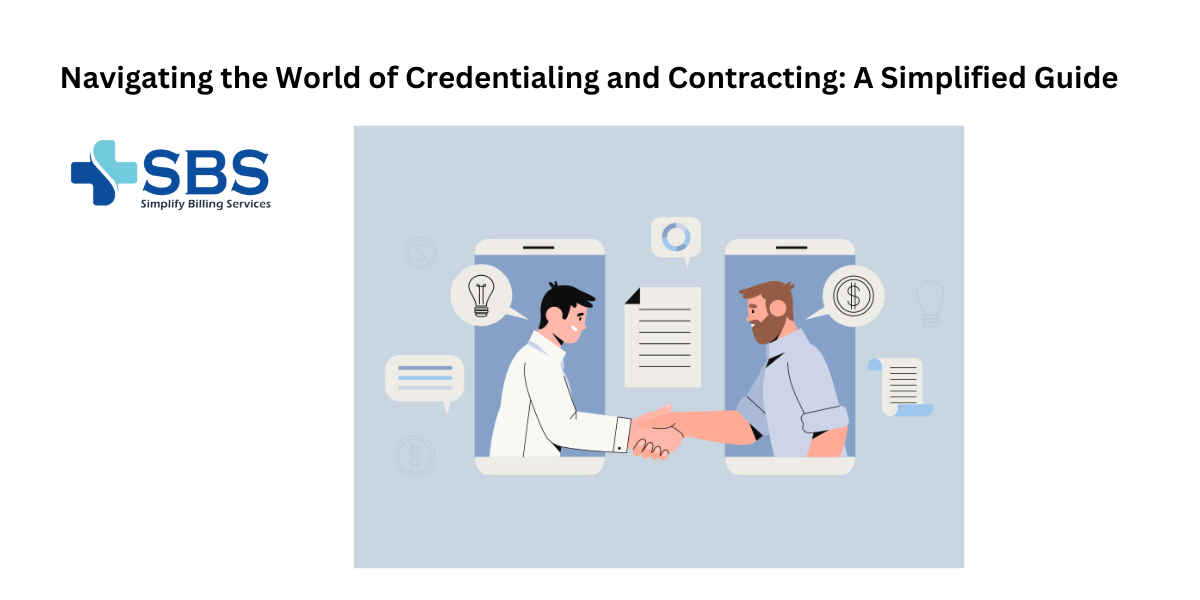In the dynamic landscape of healthcare administration, two terms often evoke a sense of complexity and confusion: credentialing and contracting. Whether you’re a seasoned professional or just stepping into the field, understanding these processes is crucial for the success of any healthcare organization. Today, we embark on a journey to demystify credentialing and contracting, shedding light on their significance and intricacies.
What is Credentialing? Imagine credentialing as the gateway to legitimacy in the healthcare realm. It’s the process through which healthcare providers validate their qualifications, experience, and competence to practice within a specific network or facility. From physicians to allied health professionals, every individual must undergo this meticulous scrutiny to ensure patient safety and uphold industry standards.
The Significance of Credentialing At its core, credentialing safeguards patients by ensuring they receive care from qualified professionals. By verifying credentials, healthcare organizations mitigate risks associated with incompetent practitioners, thus fostering trust and confidence among patients. Moreover, credentialing facilitates seamless collaboration among healthcare providers, promoting interdisciplinary care and enhancing overall patient outcomes.
Navigating the Credentialing Process While essential, the credentialing journey can be labyrinthine. From gathering documentation to completing applications and undergoing background checks, each step demands meticulous attention to detail. Additionally, navigating the myriad of credentialing requirements set forth by different insurers and healthcare networks adds another layer of complexity. However, with the right resources and support, this process can be streamlined for efficiency.
Understanding Contracting Now, let’s delve into the realm of contracting. In essence, contracting involves establishing agreements between healthcare providers and payers, outlining terms of service, reimbursement rates, and other pertinent details. These contracts govern the financial relationship between providers and insurers, dictating how services are billed, reimbursed, and managed.
The Impact of Contracting Contracting plays a pivotal role in the financial health of healthcare organizations. Negotiating favorable contracts with insurers can significantly impact revenue streams, operational efficiency, and overall sustainability. Moreover, strategic contracting allows providers to expand their patient base, access new markets, and cultivate mutually beneficial partnerships within the healthcare ecosystem.
Navigating the Contracting Landscape Similar to credentialing, navigating the contracting landscape requires careful planning and negotiation skills. Providers must conduct thorough market analysis, assess payer networks, and leverage data analytics to inform their contracting strategies. Additionally, cultivating strong relationships with payer representatives and staying abreast of industry trends can enhance negotiating power and yield favorable contract terms.
Conclusion: Simplify Billing Services – Your Partner in Success In conclusion, while credentialing and contracting may seem daunting at first glance, they are indispensable components of the healthcare ecosystem. By understanding their significance and intricacies, healthcare providers can navigate these processes with confidence and efficiency. And when it comes to streamlining credentialing and contracting operations, Simplify Billing Services stands as your trusted partner. With our expertise and innovative solutions, we empower healthcare organizations to thrive in an ever-evolving landscape, ensuring optimal patient care and financial sustainability. Let’s simplify your journey to success together.

